Published by the Foundation
for a Smoke-Free World
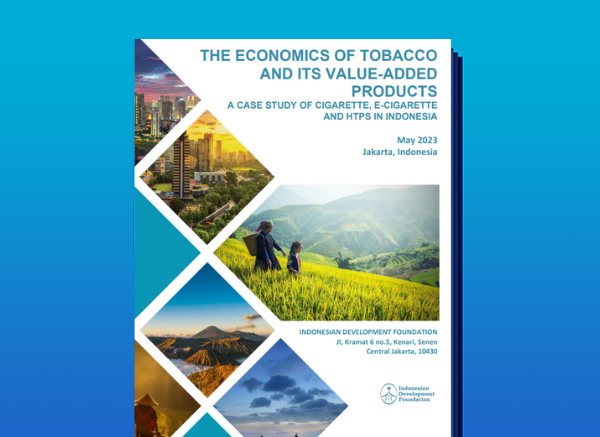
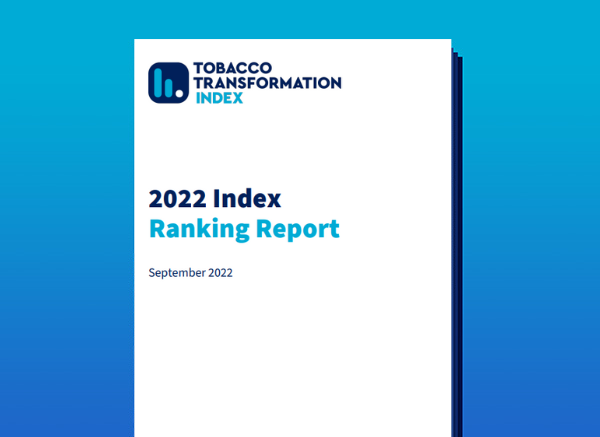
The Foundation for a Smoke-Free World presents the second Tobacco Transformation Index®, building on the first edition released two years ago.
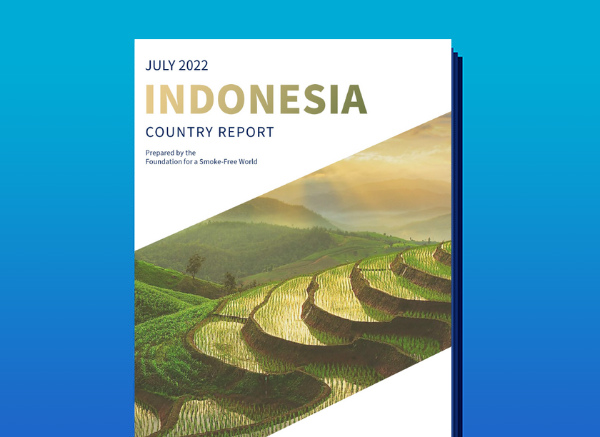
Indonesia is the fourth most populous nation in the world, with nearly 274 million residents (World Bank 2020). Its population is spread across an archipelago consisting of 17,508 islands, grouped in 34 provinces, and consists of more than 300 ethnic groups (EOI 2014, EOI 2022). Coupled with the relatively high rate of smoking in Indonesia―where roughly 56% of men of men smoke and approximately 9% are former smokers (most of whom smoke clove-flavored cigarettes known as kretek)―current trends in tobacco use call for a robust public health response.
CLICK TO ACCESS THE REPORT
This report is a comprehensive scoping review of the economics of curbing smoking in Turkey. It considers supply, demand, health, and public policy aspects of tobacco, tobacco products, and their alternatives in Turkey. The scoping review constitutes the first stage of a longer-term project in which the information collected in the first stage will lead to new research projects to contribute to the field. The ultimate aim of our work is to end smoking epidemic, and the economic burden associated with tobacco-attributable diseases and deaths.
CLICK TO ACCESS THE REPORT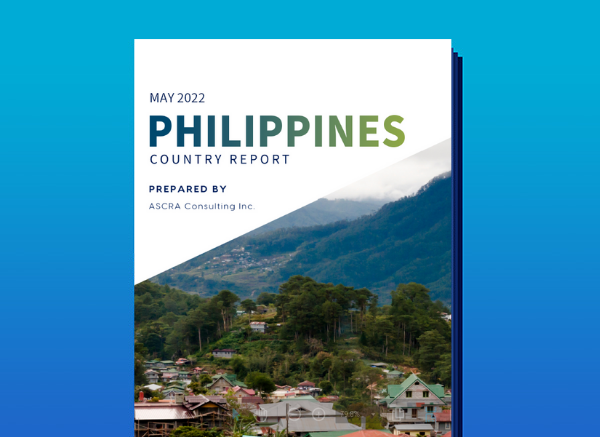
The Philippines, among ASEAN countries, ranked third in cigarette sticks production; In terms of sales, it sold over 70 million cigarette sticks in 2020. Quit rate 4.0% out of 52.2% who made a quit attempt in the past 12 months. The Philippines, according to WHO Cessation Index, offers NRTs and cessation services with at least one cost covered.
CLICK TO ACCESS THE REPORT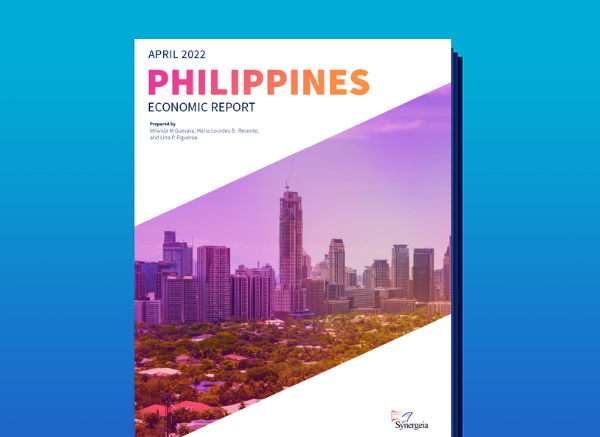
This research is an independent assessment of the effectiveness of the Philippines government policies on tobacco control. It also explores the market for non-tobacco products and how consumers and government receive them. The study identifies and recommends areas that need a fuller evaluation and a more in-depth investigation from the assessment results.
CLICK TO ACCESS THE REPORT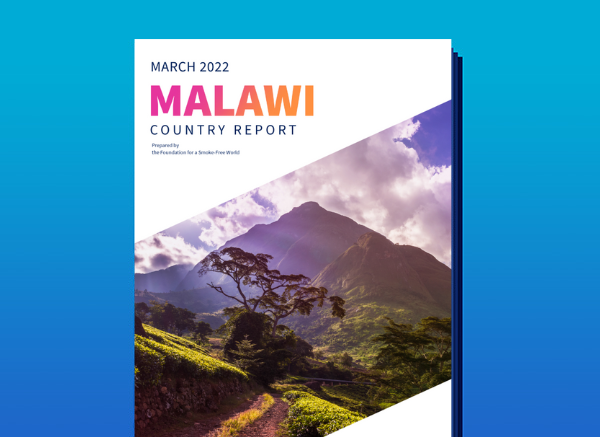
This report provides a high-level overview of the tobacco sector in Malawi. It opens with a brief description of large-scale changes in global tobacco production and their implications for Malawi, a key focus for the Foundation for a Smoke-Free World’s Agricultural Transformation Initiative. Then the report examines the lived experiences of smallholder tobacco farmers with an emphasis on their economic well-being, health, and environment. It then pivots to summarizing the in-country landscape in which a transition to alternative livelihoods must potentially take place. In doing so, the profile simultaneously seeks to make a case for change while providing a multifaceted contextual window into the country’s economic, agricultural, regulatory, operational, and political profile with a focus on the tobacco sector at large.
CLICK TO ACCESS THE REPORT
In the following report, we illustrate the overall situation of the market of tobacco products, the role
and extent of the presence of stakeholders in the economy, and the state of the policy related to tobacco use
and production in Sri Lanka.

Malaysia has an active tobacco market comprising multiple products and different stakeholders. Locally produced and imported tobacco products include filtered cigarettes, hand-rolled cigarettes, smokeless tobacco products, smoke-free electronic gadgets (harm reduction products), e-cigarettes and shisha or huqa. Stakeholders include consumers, producers, policy makers and tobacco control policy advocates and activists.
CLICK TO ACCESS THE REPORT
This report examines how the use and sale of tobacco is currently impacting China, which is home for 30% of global smokers.
CLICK TO ACCESS THE REPORT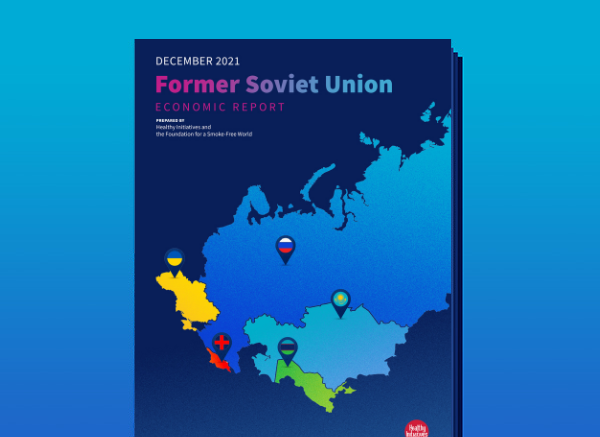
This executive summary provides an overview of the findings in reports that examine the economic landscape of the tobacco sector in five countries that were formerly part of the Soviet Union: the Russian Federation (Russia), Ukraine, Georgia, Kazakhstan and Uzbekistan. These countries have a complicated and interwoven common past. Until 1991, they were all part of the Soviet Union, united by one government, one language, one healthcare system, an interdependent economic system, and universal military conscription into a common military complex.
After 1991, the countries went through social and economic transformations. They faced similar challenges and made similar economic decisions that were based, for the most part, on their previous common culture. Russia and Kazakhstan are now considered upper middle-income countries based on their annual per capita incomes. Russia’s per capita annual income is $11,585 and Kazakhstan’s is $9,731.10. Uzbekistan’s annual per capita income is $1,724.80, Ukraine’s is $3,659, and Georgia’s is $4,769. These three countries are considered lower middle-income countries.
Click to access FSU Project Overview
According to WHO estimates, Uzbekistan has a lower prevalence of smoking compared to other countries, both in terms of the average number of cigarettes smoked per day and the total percentage of smokers. In Uzbekistan about 14.4% of the adult population smokes cigarettes, versus 17% in Kazakhstan, over 27% in Russia, 23% in Ukraine, and 25% in Georgia.
CLICK TO ACCESS THE REPORT
Smoking is one of the major public health issues in Ukraine. According to the age-adjusted WHO methodology, the average tobacco smoking prevalence2 in Ukraine was 26.0% in 2017, 43rd highest in the world out of 149 countries, and 28th highest out of 47 European countries.
CLICK TO ACCESS THE REPORT
As of 2018, roughly 226,000 people died due to the smoking-related diseases, of whom 201,000 were men. This means that Russia remains among the countries with the highest tobacco-related mortality rate.
CLICK TO ACCESS THE REPORT
Smoking and passive smoking are among the main public health issues in Georgia. Tobacco smoking prevalence in Georgia was 29.9% in 2017, ranking 23rd highest in the World and 15th in Europe (WHO 2019). Georgia is the “leader” in this indicator compared to its neighbors. In addition to a high prevalence of tobacco smoking, 43% of the adult population of Georgia are exposed to secondhand smoke at home and 15.8% are affected in the workplace. In total, more than half of the population is affected by secondhand smoke without their consent.
CLICK TO ACCESS THE REPORT
Despite growth to 32.1 billion units in 2009 and the subsequent decline to 22.7 billion units in 2019, Kazakhstan is still at the same level as in 2003, when it had just launched its active efforts aimed to curb tobacco use. This indicates that the country has merely slowed down the growth in its tobacco use, and has not achieved any effective reduction.
CLICK TO ACCESS THE REPORT
The government of Nepal has taken some important measures to regulate the tobacco market and reduce health burden of tobacco consumption, particularly since early 2010s, when it enforced tobacco control act in 2011. Since then, several other measures like graphic health warning, banning of promotion and advertisement, banning of sales to minors, introducing health burden tax, promoting public awareness are a few notable policy and legal measures that are enforced. Despite the efforts, reducing the consumption tobacco is long standing battle.
CLICK TO ACCESS THE REPORT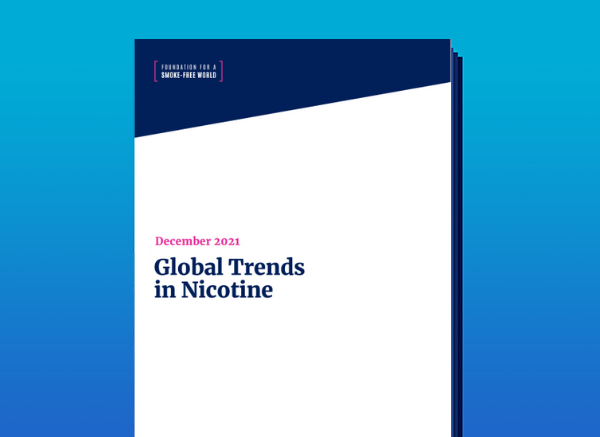
The Global Trends in Nicotine reports establish the groundwork for the Foundation for a SmokeFree World in the area of industry transformation, and represent an important component in the Foundation’s research program. Specifically, the reports identify the major players in nicotine delivery, outline their product offerings and geographic focus, and quantify their output. The first Global Trends in Nicotine report was published based on data from 2017. This report updates the record with data from 2020.
CLICK TO ACCESS THE REPORT
This report explores the structural reasons for Germany’s historical opposition to tobacco
control both at the national and international level, examining historical, political, cultural,
procedural, and economic impediments to reducing smoking.

This report examines the economic landscape of the tobacco industry in Bangladesh, which has a large and thriving tobacco market that is fueled by its growing economy. Approximately 46% of adult males and 25.2% of adult females in Bangladesh use tobacco.
CLICK TO ACCESS THE REPORT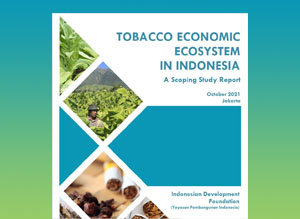
This report frames the general and current tobacco economic ecosystem outlook in Indonesia, which includes consumption rates, smoking trends, demographics, health expenditures related to smoking-attributable diseases, mortality rates, productivity losses, and economic costs. This report also highlights government revenue from excise taxes, tobacco farmers and industry labour, the use of other tobacco processing products, and existing government legislation.
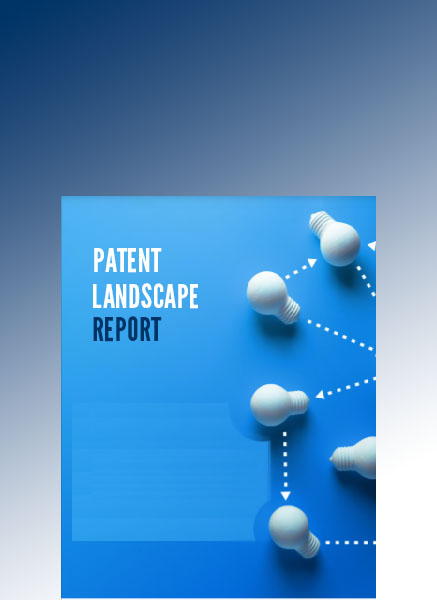
This report presents an overview of the patent landscape for tobacco harm reduction technologies based on analysis of patent publication data.
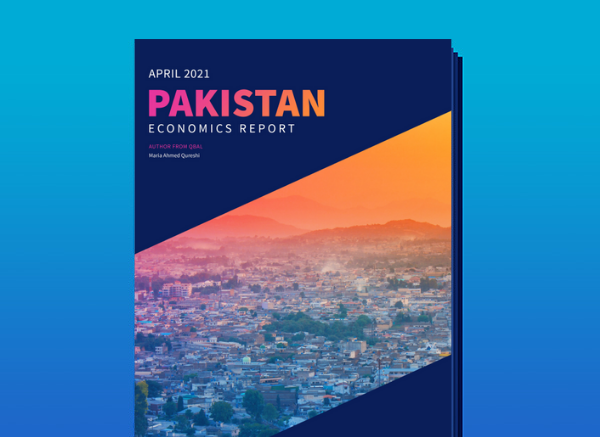
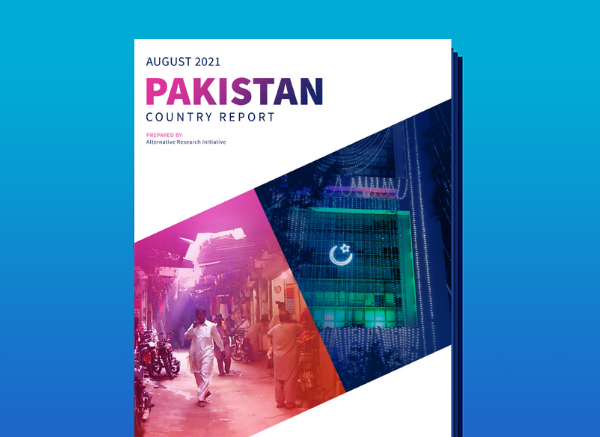
This report provides a glimpse of the tobacco landscape in Pakistan. Despite bans in recent years, there are still 24 million users of smoked and smokeless tobacco in Pakistan. Given the high levels of tobacco use, the country faces considerable health and economic consequences.
CLICK TO ACCESS THE REPORT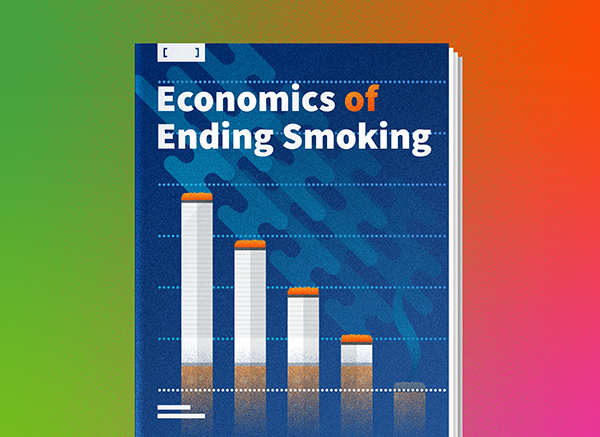
Economic issues play a major role in the fight to eradicate smoking, particularly in an era of major advances in harm reduction. The Economics of Ending Smoking webinar series was conceived by the Foundation for a Smoke-Free World as a means to bring together stakeholders from around the world – particularly in LMIC countries where the need is most critical. Current evidence and key strategies in the fight to eradicate smoking were discussed during weekly online forums held between May and November of 2020.
CLICK TO ACCESS THE REPORT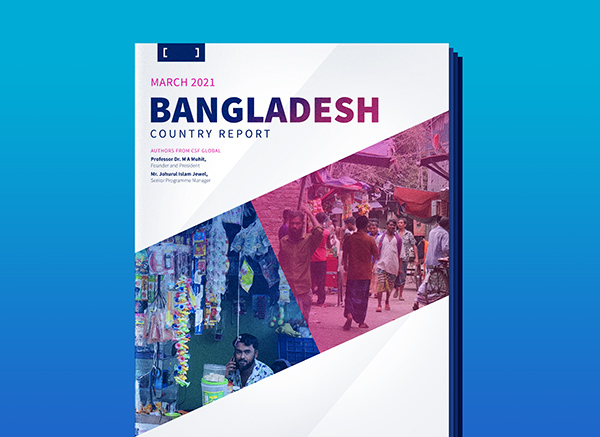
The Foundation for a Smoke-Free World is committed to filling key knowledge gaps in our collective understanding of tobacco production and use, especially in the low- and middle-income countries where it is increasingly grown and consumed. In that vein, this report provides a glimpse of the tobacco landscape in Bangladesh, where 46.3 million adults use a variety of combustible and/or smokeless tobacco products. The heavy burden of tobacco-related health conditions in Bangladesh is rooted in the country’s high production and consumption of tobacco products. Therefore, it’s one of the five focus countries of the Bloomberg Initiative (BI) to reduce tobacco use.
CLICK TO ACCESS THE REPORT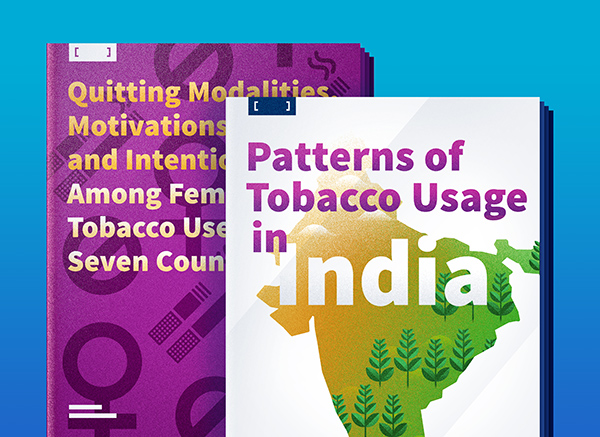
The Foundation for a Smoke-Free World commissioned a poll in seven countries: Greece, India, Japan, Norway, South Africa, the UK, and the US. The poll captured the participants’ demographic data, their habits and perceptions regarding tobacco and tobacco harm reduction (THR) products, as well as their experiences quitting tobacco products.
Results of the poll were analyzed and presented as two posters (available below) at the annual Society for Research on Nicotine and Tobacco meetings held virtually in February 2021. The first poster explores the smoking behavior and motives among women. The results highlight that further intercountry consideration is needed when developing gender specific cessation or tobacco harm reduction interventions.
The second poster, Patterns of Tobacco Usage in India, explores the disparities in how tobacco products are used throughout India based on age groups, gender, education, geography and socioeconomic status:
Quitting Modalities, Motivations, and Intentions Among Female Tobacco Users in Seven Countries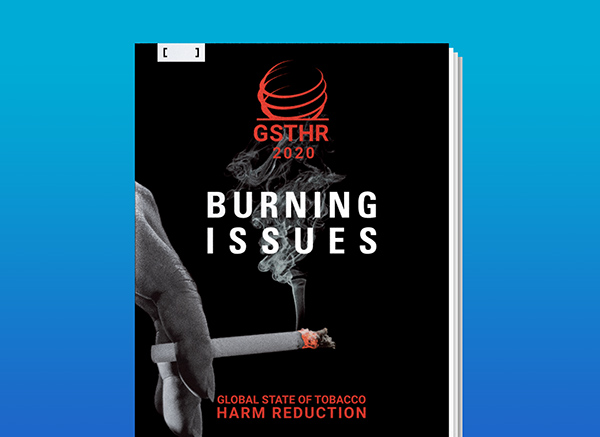
This latest report in The Global State of Tobacco Harm Reduction series from UK-based public health agency Knowledge·Action·Change (KAC) examines the role of tobacco harm reduction. The authors show there is an urgent need to scale up tobacco harm reduction if its full public health potential is to be realized.
Their first report, No Fire, No Smoke that was published in 2018, documents the history and development of harm reduction, as well as use, availability and regulatory responses to safer nicotine products around the world.
CLICK TO ACCESS THE REPORT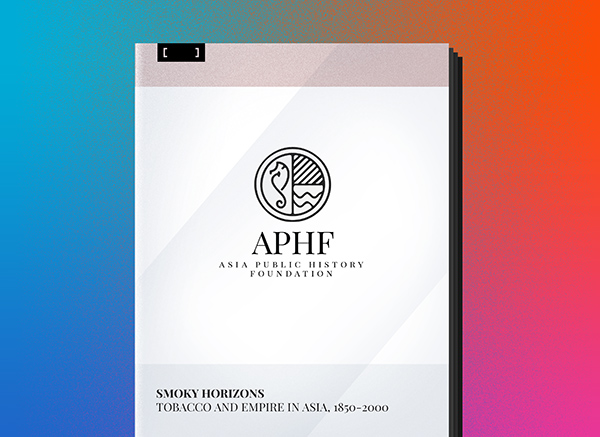
Few have attempted to study the introduction and spread of tobacco cultivation in Asia using an analytical frame, which integrates the imperial economy, local social structures, and the commodity history of tobacco. This is a report on preliminary archival and ethnographic work on the economic and social relationship between tobacco cultivation and imperial expansion in Asia, focusing primarily on British India (today’s nation-states of India, Pakistan, and Bangladesh), China, and Japan.
CLICK TO ACCESS THE REPORT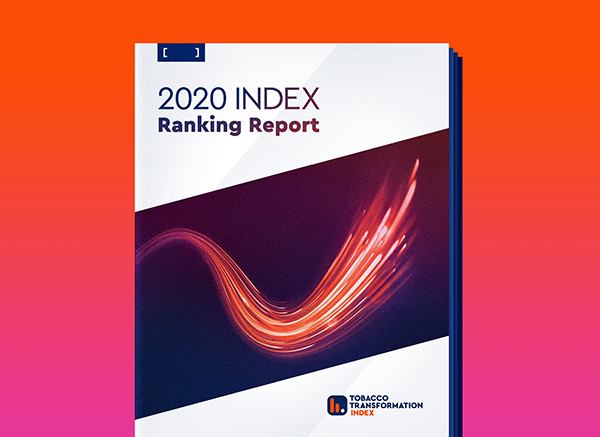
The 2020 Tobacco Transformation Index ® represents the first comprehensive effort to evaluate tobacco companies’ commitments and actions as they relate to tobacco harm reduction.
The 2020 index assesses the activities and performance of the world’s 15 most globally and regionally influential tobacco companies as they pertain to tobacco harm reduction. This includes analyzing and comparing companies’ respective product offerings, sales performance, and capital investments for both high-risk tobacco products and reduced-risk alternatives. The 2020 index also compares companies’ activities and performance across 36 countries, which are divided into groups of low-medium income (LMIC) and high-medium income (HMIC).
By monitoring and critically evaluating tobacco companies’ behavior, including actions that either support or impede tobacco harm reduction, the Index provides objective, transparent information to all stakeholders and incentivizes companies to act more quickly and responsibly than they otherwise would.
CLICK TO ACCESS THE REPORT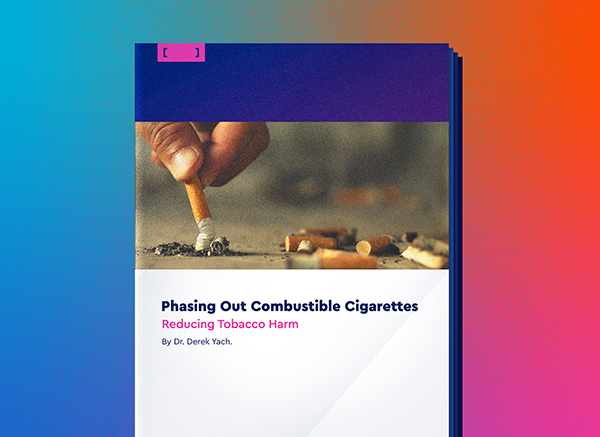
This paper outlines rational, researched-based strategies for phasing out combustible cigarettes, including a “nudge” approach and logical regulatory actions. Central to this plan are scientifically informed policies regarding THRPs. Unfortunately, the media and public officials have distributed so much misinformation about these products that an increasing numbers of smokers think their health risks are equal to that of combustible cigarettes. This view is not only inaccurate but dangerous, and public officials have an ethical and professional obligation to correct these misperceptions.
CLICK TO ACCESS THE REPORT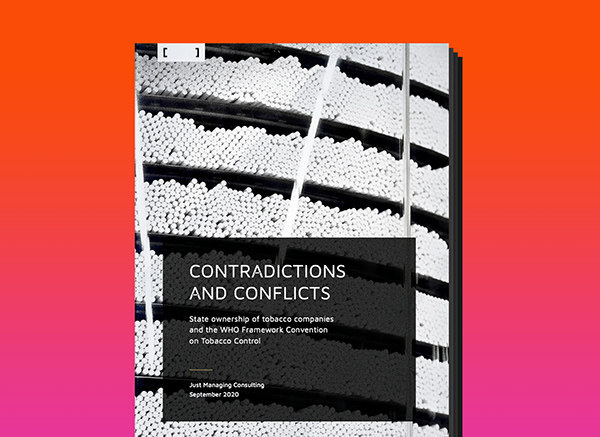
Research by leading international business and corporate governance scholar Daniel Malan identifies inherent conflicts of interest with many of the countries leading the development of global tobacco control policy. The “Contradictions and Conflicts” report specifically identifies contradictions between governments’ fiduciary responsibility to maximize state monopoly profitability and their health responsibility to minimize public health risks, as well as generate potential solutions.
Tobacco products kill 8 million people every year. Between 2000 and 2019, overall global tobacco use declined by less than a quarter of a percentage point per year, despite global attempts to address the pandemic, spearheaded by the World Health Organization’s Framework Convention on Tobacco Control (FCTC), in force since 2005. There are currently 182 parties to the FCTC, which has as its main objective “to protect present and future generations from the devastating health, social, environmental and economic consequences of tobacco consumption and exposure”
CLICK TO ACCESS THE REPORT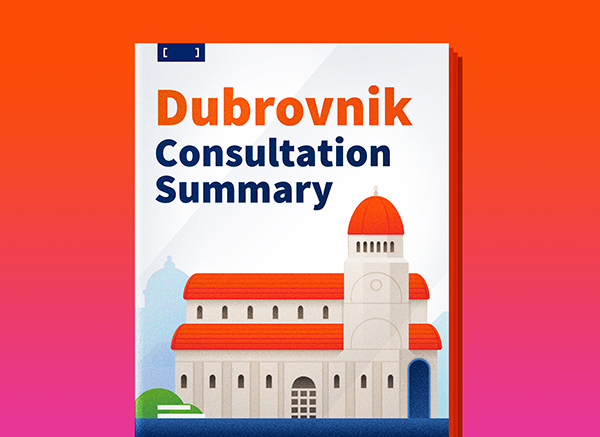
This is a summary of expert contributions to the 2020 Dubrovnik Consultation, a summit meeting on regulatory issues, taxation and other perspectives in tobacco harm reduction. This summit was originally planned as a live meeting in Dubrovnik, Croatia in mid-2020, but was postponed due to the global COVID-19 pandemic. The expert contributions to the virtual meetings are summarized in this document. The Dubrovnik Consultation is a unique opportunity to identify areas of intervention in tobacco harm reduction regulation and to enable the Foundation of the Smoke-Free World to prioritize future areas of research.
CLICK TO ACCESS THE SUMMARY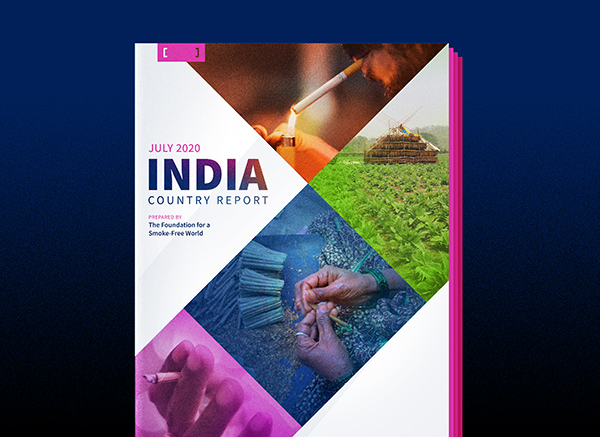
The Foundation for a Smoke-Free World is committed to filling key knowledge gaps in our collective understanding of tobacco production and use, especially in the low- and middle-income countries where it is increasingly grown and consumed. In that vein, this report provides a glimpse of the tobacco landscape in India. As one of the world’s largest producers and consumers of tobacco, understanding this landscape and the opportunities to transform – both literally and figuratively – have never been more important. This report only scratches the surface of the forces shaping that landscape, but we hope that, in doing so, it encourages others to make even greater explorations of it.
Click here to access the report
The Watching Brief series chronicles the most up-to-date data on smoking across the world. In the first of this series, Foundation economist Ayda Yurekli examines the current state of the Hungarian tobacco industry. From analyses of excise taxes to an investigation of illicit trade, this two-part Brief offers an illuminating look into the past, present, and future of smoking in Hungary.
Issue 1: In January of 2020, the Hungarian government significantly reduced its excise tax on e-cigarettes (ENDS), while it left heated tobacco product (HTP) excise taxes unchanged. We examine the potential impact of ENDS tax reduction on public health and government interests.
Issue 2: Hungary recently achieved a 9-percentage-point reduction in smoking prevalence – from 36% in 2005 to 27% and may set a target rate for being smoke-free in the near future.
Click here to access the two-part piece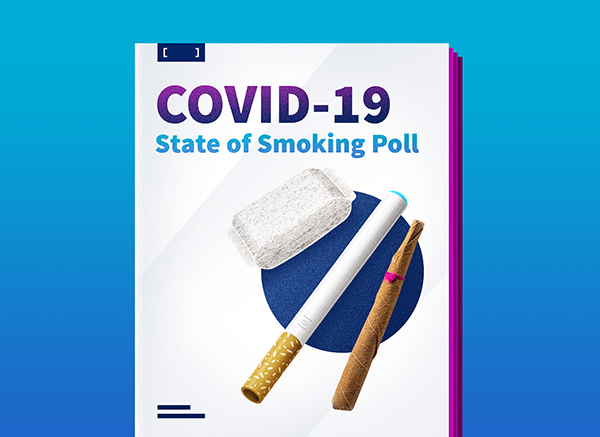
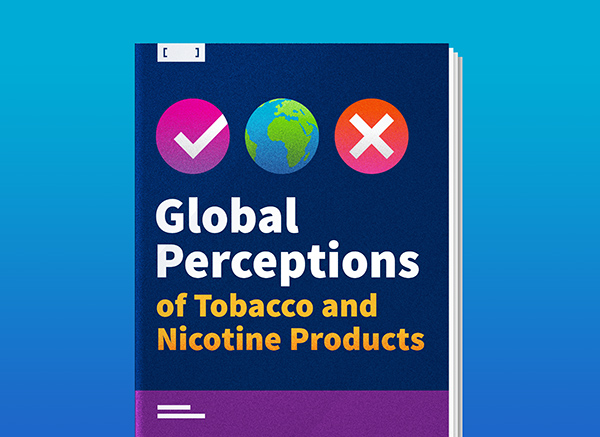
The Foundation for a Smoke-Free World commissioned a survey in seven countries including Greece, India, Japan, Norway, South Africa, the UK, and the US. The survey captured participants’ demographic data, their habits and perceptions regarding tobacco and tobacco harm reduction (THR) products, as well as their experiences around quitting tobacco products. A total sample of 54,279 adults between 18-69 years of age who were current users of any tobacco or THR product (46,220) as well as quitters who quit within the past five years (8,047) participated in the survey. This is a follow-up poll to the Foundation’s 2017 survey to stay informed of global tobacco/nicotine use habits and perceptions, which was conducted in 13 countries.
Results of the poll have been analyzed and presented at scientific meetings, submitted as manuscripts for publication in peer-reviewed journals, and have been picked up by several international media outlets.
Posters presented at the annual Society for Research on Nicotine and Tobacco meeting in New Orleans, Louisiana (2020) are available here. The first explores (current and former) product users’ perceptions regarding nicotine, and the second looks at the data from the six countries that were surveyed in both 2017 and 2019 (Greece, India, Japan, South Africa, UK, and US) on the perceptions of relative harm of e-cigarettes compared to traditional combusted cigarettes over time.
Perceptions of nicotine in current and former tobacco & tobacco harm reduction product users from seven countries.
It’s time for insurers to rethink how they quantify and reduce smoking risks. Smoking risks affect life and health insurers worldwide. Tobacco risks and regulations have an impact on underwriting, pricing, claims and reserves in all countries. Smokers account for a significant proportion (10–15 percent) of life and health insurers’ books of business, and insurers worldwide are exposed to the mortality and morbidity effects of tobacco. Smokers also number disproportionately among the uninsured, and insurers may be missing out on smoker segments that are insurable – relatively “good risks” within a spectrum – but currently priced out of the market.
The report reviews current insurer practices and challenges relating to how they detect policyholders’ smoking status, quantify smoking risks, and reduce risks through smoking cessation. It then recommends potential solutions leveraging emerging technologies, products, and processes to address these barriers. Solutions are illustrated with real-world case studies from organizations innovating at the frontier.
CLICK TO ACCESS THE REPORT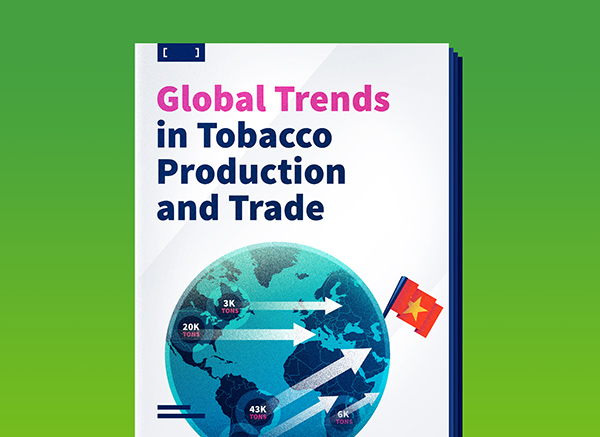
Over the past two decades, global patterns in tobacco production and trade have shifted dramatically. While research by tobacco control groups and public health organizations has focused on tobacco production and elucidated several key trends driving these shifts, considerably less is known about patterns of tobacco trade. Understanding the global tobacco economy—and the major players in it—depends on developing a more complete knowledge of all stages of the tobacco supply chain, including production of tobacco, trade of unmanufactured tobacco leaf, processing of tobacco leaf into various tobacco products, and trade and consumption of manufactured tobacco products. As with many other commodities, tobacco has its own unique and evolving supply chain. This report focuses on understanding patterns in production and trade of unmanufactured tobacco leaf.
CLICK TO ACCESS THE REPORT
The GSTHR report maps for the first time the global, regional and national availability and use of safer nicotine products, the regulatory responses to these products, and the public health potential of tobacco harm reduction.
Every six seconds someone dies from a smoking-related disease and the problem is likely to worsen; the steep smoking declines in richer countries are slowing while in poorer countries smoking is set to rise. Existing forms of tobacco control are proving insufficient. While many people give up smoking, on their own or with medicinal products, many fail. ‘Quit or die’ is no longer the only option for those who cannot give up. Safer nicotine products offer another way. There is substantial international, independent evidence that these products are demonstrably safer than cigarettes. These potential lifesaving products could lead to a global revolution in public health.
CLICK TO ACCESS THE REPORT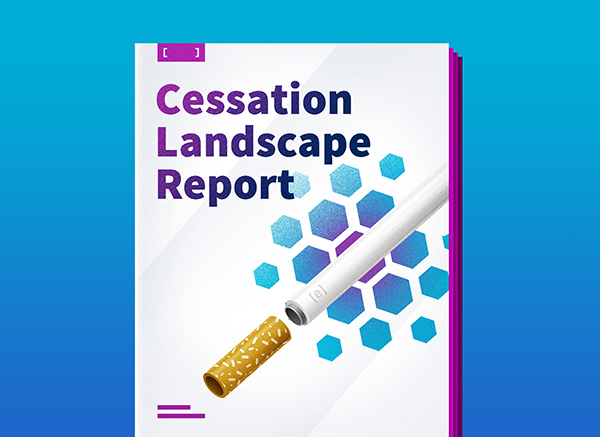
EY-Parthenon (EY-P) conducted a landscape analysis in July 2018 to identify and characterize smoking cessation products and services
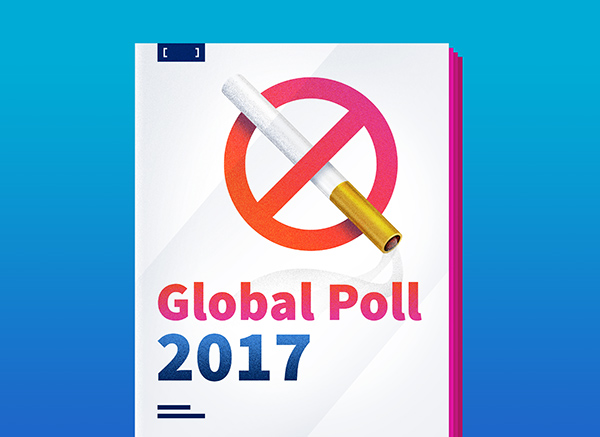

The Foundation for a Smoke-Free World aims to foster discussion on the transformational possibilities of achieving a smoke-free world in this generation. Tobacco companies have an opportunity to adopt business models that will lead to a world without combustible cigarettes. There are more than a billion smokers in the world today. Smoking prevalence is declining, but at a rate far too slow to achieve the Foundation’s objectives for smoking cessation and tobacco harm reduction. Furthermore, in accomplishing this transition successfully, we must ensure that vulnerable populations, including smallholder tobacco farmers, are supported to find sustainable alternative activities and livelihoods.
This report contributes to the discussion by presenting six case studies of companies that undertook significant business transformations. The six cases demonstrate varying motivations, and, as business transformation is not without risk, some of the companies performed better than others.
CLICK TO ACCESS THE REPORT